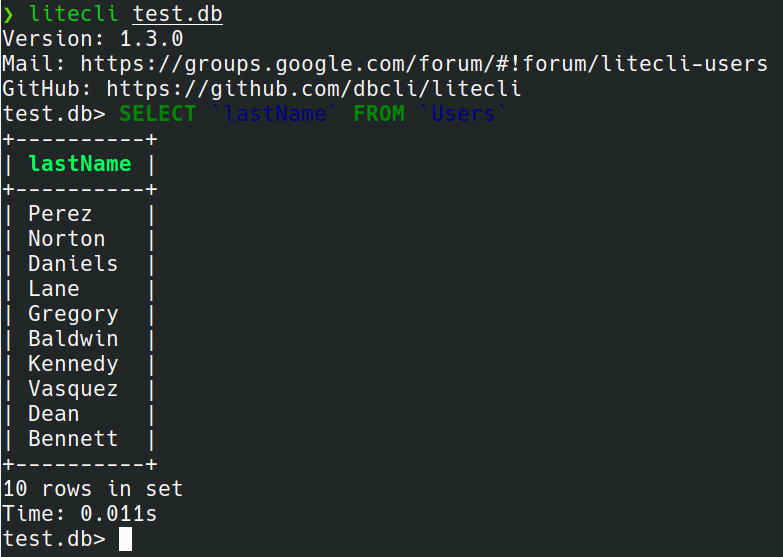Dbcli
Published on
Updated on
Warning: This post has not been modified
for over 2 years. For technical posts,
make sure that it is still relevant.
The DBLCI project creates command line database clients with auto-completion and syntax highlighting. These clients are often nicer to work with than the one a database comes with. In this post we’re going to demo the LiteCLI client.
First to install,
pip install litecli
I created a sqlite database and populated it with the following code
.open test.db
CREATE TABLE Users (
UserID INTEGER PRIMARY KEY,
firstName TEXT NOT NULL,
lastName TEXT NOT NULL
);
INSERT INTO Users (firstName, lastName) VALUES ("Pearl", "Perez");
INSERT INTO Users (firstName, lastName) VALUES ("Derrick", "Norton");
INSERT INTO Users (firstName, lastName) VALUES ("Joan", "Daniels");
INSERT INTO Users (firstName, lastName) VALUES ("Marian", "Lane");
INSERT INTO Users (firstName, lastName) VALUES ("Roland", "Gregory");
INSERT INTO Users (firstName, lastName) VALUES ("Charlene", "Baldwin");
INSERT INTO Users (firstName, lastName) VALUES ("Lester", "Kennedy");
INSERT INTO Users (firstName, lastName) VALUES ("Dan", "Vasquez");
INSERT INTO Users (firstName, lastName) VALUES ("Genevieve", "Dean");
INSERT INTO Users (firstName, lastName) VALUES ("Sue", "Bennett");
Now let’s open it up using litecli and show the syntax highlighting.
